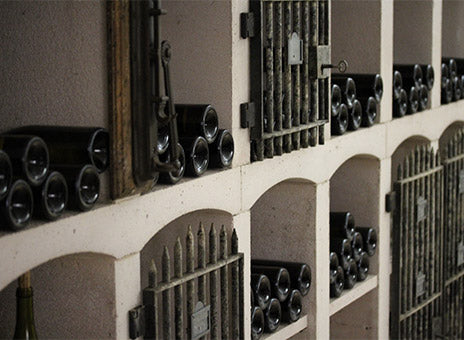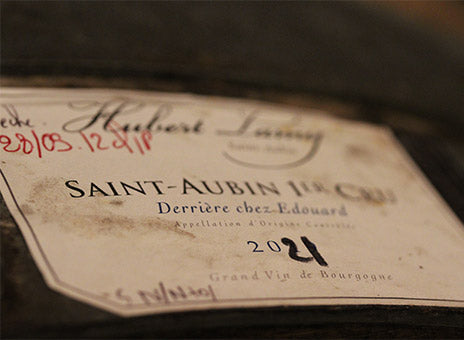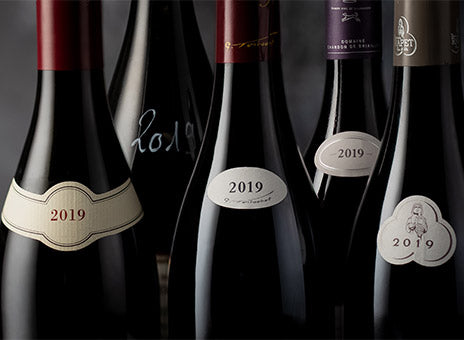
THE EVER-CHANGING FACE OF BURGUNDY
In the world of wine, Burgundy is a showcase for the highs and lows of the environmental and climatic changes we are experiencing throughout the world today. Senior vignerons, such as Paul Pillot, look today at the new generation with a certain degree of envy. They could only dream of having a flight of “années solaires” such as those which have dominated recent vintages, never having to worry whether the grapes would ripen or not. On the other hand, they are also hugely sympathetic to the peaks and troughs of freak weather conditions that are now a recurring problem: frost, hail, drought, thunderstorms, and heatwaves, almost without warning, each bringing their own individual dangers.

the soil
The soil itself has also brought new challenges for the current generation of vine growers. Decades of over-treating both soils and vines following the Second World War have taken their toll. The land’s nutrient make-up became unbalanced, making the vines in turn less disease-resistant and even more vulnerable to climatic variations. These issues have driven the decisions for more natural farming. Today, many growers in the Côte d’Or have converted to either organic or, further still, biodynamic practices. Burgundy has unquestionably been a leader in both movements this century.
Mild Winters & Late Frosts
No other vintage reflects the stresses and strains facing today’s young vignerons more than the vagaries of 2021. In previous
centuries, a cold winter was an accepted norm and welcomed by everyone involved in agriculture. Sharp winters kill bugs, reduce disease and, equally importantly, give the vines a welcome six months off. This allows the sap to decline, and the vine can have a period of repose after the previous year’s exertions.
Today, such winters are a long and distant memory. As Antoine Jobard commented, “the vines today barely have a three month break!” The notably mild 2020/21 winter was no exception. When almost summer-like conditions arrived in the third week in March, with temperatures hitting 28°C, the vines were ready to go, especially the Chardonnay. The budding started almost a full month early, leaving the vines extremely vulnerable to the ravages of the cold -7°C winter air frost. Combined with snow which arrived on 6th, 7th and 8th April, this wiped out almost the entire white Burgundy crop in the Côte de Beaune and half the slightly less advanced Pinot Noir crop in the Côte de Nuits.
Losses of 85% were not uncommon in villages such as Meursault. For example, Jean-Philippe Fichet’s normal 22 barrels of Meursault Le Tesson was a paltry 5 barrels this year. Walking into many of our growers’ cellar this year was a humbling experience, seeing them only a quarter full or less.
In 2021 the vicissitudes of nature did not stop there. Firstly, and unprecedentedly, the normally
hardy vines went into a state of shock and completely shut down for a month. When the vines did start to reawaken nature continued to test their resilience. June, July and early August were cool and damp, in contrast to these months of abundant sunshine in preceding years.
Viticulture & Harvest
Vineyard vigilance was paramount this year. The vines, having already experienced so much, were susceptible to disease, most notably mildew and oidium. In these tricky times, it is in the vineyard that the very best and hardest-working growers proved their worth and justified their reputation. Whilst it is true that the organic and particularly the biodynamic producers had fewer weapons in their armouries to fight disease, in reality it was a 24/7 summer across the board. The more hours you spent in the vines, the greater chance you had to have fine quality fruit at harvest time
The sunshine arrived in August in the nick of time. Whilst temperatures didn’t reach the extremes of previous years, conditions were ideal for a long slow ripening of the remaining small crop. The harvest was late in comparison to the majority this century and took place in excellent conditions during the latter half of September. Although the fruit picked was certainly small in volume, it was healthy.

the wines
Most excitingly the end results show a return to the best qualities of a more traditional style of Burgundy: great purity, a strong sense of vineyard origin, freshness, fine precise tannins for the reds, and the lowest alcohol levels in recent years.



